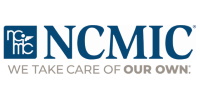10 People, 5 Corporations Indicted For Operating Fraud Ring in Hollis, Queens Superintendent of Insurance Gregory V. Serio and Attorney General Eliot Spitzer today announced the indictment of 10 individuals and five corporations accused of operating an insurance fraud ring out of SZ Medical, a clinic in Hollis, Queens. The defendants include nine health care providers and are alleged to have fraudulently billed an insurance carrier for months of treatment and extensive testing, including medical evaluations, diagnostics tests, physical therapy, chiropractic treatment and acupuncture. Gregory V. Serio, Superintendent of Insurance, said, "It’s particularly disturbing that this fraud ring was comprised of doctors and health care providers, professionals who are here to protect us and not betray the public’s trust by defrauding our insurance system. Thanks to our strong partnership with Attorney General Spitzer, these people have been exposed and this case will help us build more momentum in the fight against fraud." "This case demonstrates the sustained and coordinated effort required to combat the pervasive nature of auto insurance fraud," Attorney General Spitzer said. "My office will continue to work with the State Insurance Department, law enforcement, and industry officials to bring these cases. While we are making progress, there is still an extraordinary amount of work yet to do." Under the State's no-fault auto insurance law, insurance carriers reimburse medical facilities for services provided to persons injured in motor vehicle accidents. It is alleged that the defendants submitted fraudulent claims to a no-fault insurance carrier for services never provided or for services that were not medically necessary. The charges stem from a long-term investigation of SZ Medical which began in Spring, 2003. According to the indictment, the defendants fraudulently billed an insurance carrier for months of treatment and extensive testing, including medical evaluations, diagnostics tests, physical therapy, chiropractic treatment and acupuncture. The indictment charges that fraudulent claims were submitted by three medical doctors, Sergey Zavilyansky, 48, of Brooklyn; Gary Friedman, 51, of Manhattan; and Lee Craig Nagourney, 52, of Brooklyn. Zavilyansky is the owner of SZ Medical. All three are charged with fabricating medical diagnoses and submitting claims for services not provided or not medically warranted. The indictment additionally charges the following defendants with fraudulent claim submissions: Stanley Frankel, 69, of Manhattan, a dentist; Michael Ferrato, 56, of Suffolk County, a psychologist; Juby Uralil, 26, of Queens County, a physical therapist; Joel Santos, 34, of Queens County, a physical therapist; Peter Pramberger, 51, of Suffolk County, a chiropractor; and Ji Yong Kim, 39, an acupuncturist. The indictment also charges that defendant Nelson Bloom, 57, of Brooklyn, a paralegal, held himself out as a licensed attorney and directed a no-fault patient to undergo medical tests and attend the clinic for several months, without regard to medical need, in an effort to increase the potential settlement of a bodily injury claim. Five corporations are also charged in the indictment: SZ Medical, P.C.; Almaz Medical Services, P.C., owned by physician-defendant Lee Craig Nagourney; Ferrato Psychological Services, P.C., owned by psychologist-defendant Michael Ferrato; Life Chiropractic P.C., owned by defendant Peter Pramberger; and Somun Acupuncture, P.C., owned by acupuncturist-defendant Ji Yong Kim. The defendants are facing charges of Insurance Fraud in the Third Degree, a D felony; Insurance Fraud in the Fourth Degree, an E felony; Falsifying Business Records in the First Degree, an E felony; Insurance Fraud in the Fifth Degree, an A misdemeanor, Attempted Grand Larceny in the Fourth Degree, an A misdemeanor; Practicing or Appearing as an Attorney-At-Law Without Being Admitted and Registered, an A misdemeanor; Conspiracy to Commit Grand Larceny in the Fourth Degree, an A misdemeanor; and Attempted Petit Larceny, a B misdemeanor. New York is aggressive in its fight against insurance fraud. To report suspected incidents of insurance fraud call 1-888-FRAUD-NY (1-888-372-8369). It should be noted that an arrest is merely an accusation and that a defendant is presumed innocent until proven guilty.
- Home
- About
- Find a DC
- Membership
- Education
- News
- Newsletter
- Conventions & Symposiums
- Webinars
- Positive Press (F4CP) ↪
- Insurance and Medicare ⚿
- New Practitioners ⚿
- Center for Excellence ⚿
- Informative Links
- Leadership
- Officers and Regional Directors
- Districts
- District Officers ⚿
- District Map
- District 1 (Manhattan)
- District 2 (Brooklyn)
- District 3 (Queens)
- District 4 (Bronx)
- District 5 (Staten Island)
- District 6 (Nassau)
- District 7 (Suffolk)
- District 8 (Westchester)
- District 9 (Mid-Hudson)
- District 10 (Capital Region)
- District 11 (Mohawk Valley)
- District 12 (Central NY)
- District 13 (Binghamton Area)
- District 14 (Rockland County)
- District 15 (Finger Lakes)
- District 16 (Southern Tier)
- District 17 (Western NY)
- Committees
- Bylaws ⚿
- Code of Ethics ⚿
- Elections ⚿
- Advocacy
- Sponsors
- Classifieds





